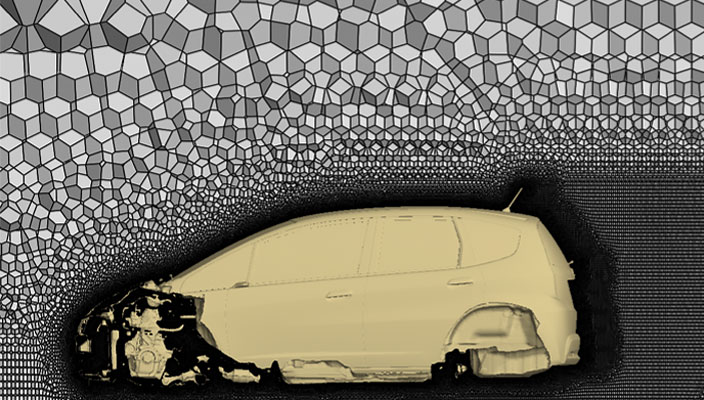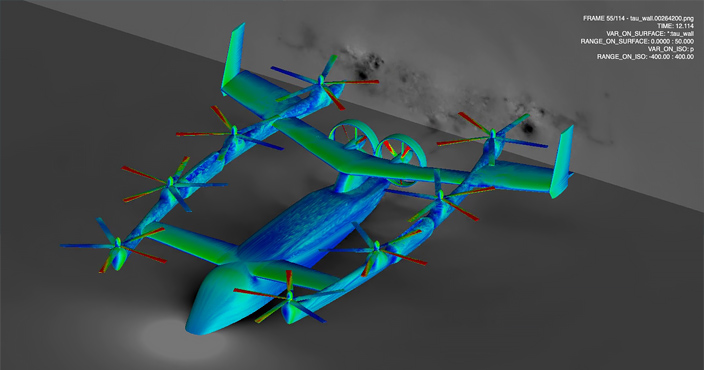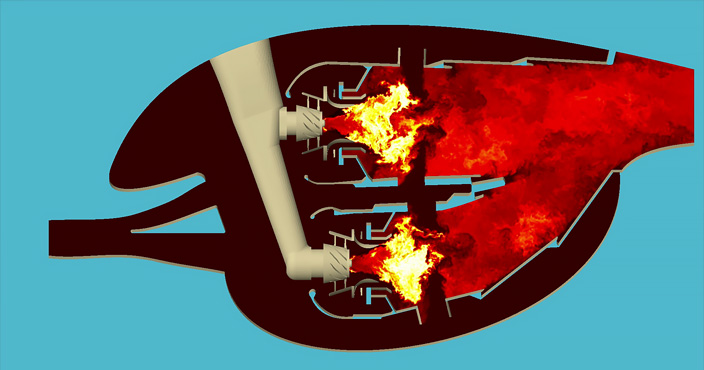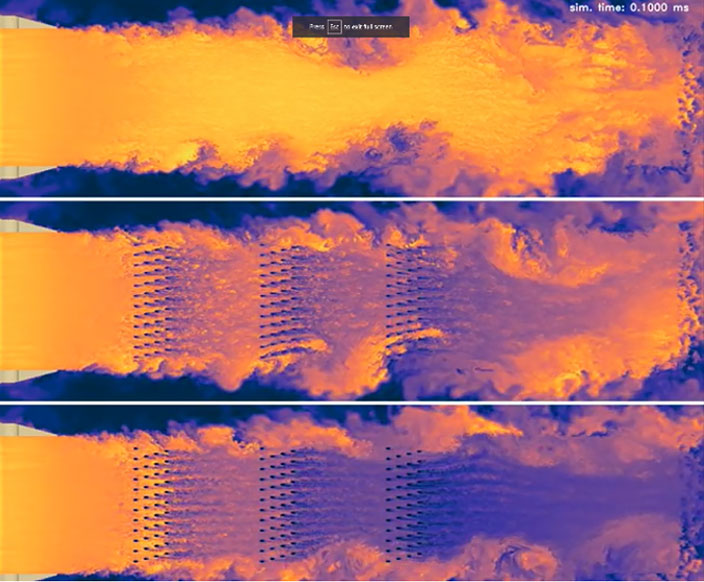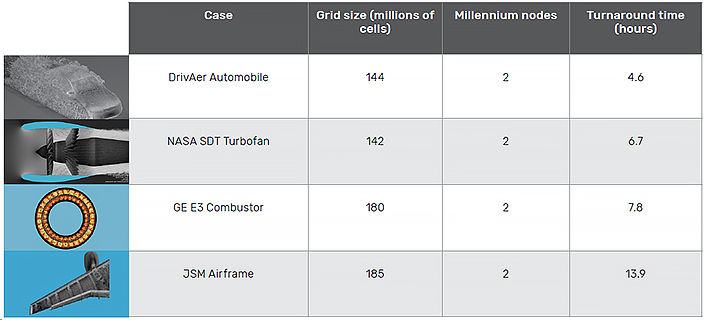Technical Brief
Fidelity LES Solver
High-fidelity multiphysics CFD
Cadence Fidelity LES Solver, formerly Cascade CharLES, is the industry’s first high-fidelity computational fluid dynamics (CFD) analysis engine that expands the applicability of large eddy simulations (LES) into the mainstream aerospace, automotive, and turbomachinery domains. Designed to scale, Fidelity LES Solver addresses the most demanding fluid dynamics challenges by accurately predicting traditionally complex problems for CFD in aeroacoustics, aerodynamics, combustion, heat transfer, as well as multiphase applications.
Overview
Fidelity LES Solver
Predictive high-fidelity simulations require high-quality meshes. By leveraging clipped Voronoi diagrams, the polyhedral mesh generator is fast, scalable, and robust when processing most complex geometries (Figure 1). Users can easily introduce resolution where needed, run coarse simulations of complex geometries, and simulate moving geometries.
Realizing the predictive benefits of LES requires much more than just turning on time dependence and changing the turbulence model. Fidelity LES Solver combines advanced numerical methods and models, and extreme scalability in CPU-based and GPU-based high-performance computing environments.
The solver discretization is a finite volume approach based on a generalization of the discrete entropy framework for unstructured meshes that treats a variety of flow regimes, including low-speed flows, high-speed flows with shocks, and reacting flows. This approach leads to a stable, homogenous flux discretization without complex sensors, upwinding hybridization, or tuning of coefficients for stability. This unique solver discretization is combined with the latest sub-grid scale modeling and wall modeling to deliver an LES capability with remarkable robustness to grid resolution (Figure 2).
Aerodynamics
Fidelity LES Solver can predict aerodynamic forces for complex geometries over a range of flow regimes from low-Mach to transonic and supersonic.
For example, it can capture changes in vehicle drag due to subtle geometric design modifications (Figure 3) and identify the onset of stall over high angle of attack airfoils on a commercial aircraft.
Aeroacoustics
Aeroacoustics predictions are relevant for a wide range of industrial applications, from supersonic jets to fan noise to combustion-acoustic interactions in gas turbines (Figure 4).
Image copyright Honda Motor Co (ref AIAA 2023-3938)
Even for “extremely loud” noises, the pressure fluctuations that constitute the radiated sound are orders of magnitude smaller than the ambient pressure and much smaller than the near-field pressure disturbances associated with turbulent compressible flow. Fidelity LES Solver is ideally suited to capture such important but low-energetic acoustic features, thanks to its unsteady simulation capabilities with low-dissipation and low-dispersion numerical methods.
Combustion
Turbulent combustion underpins much of our modern energy economy. Power generation, aviation, aerospace, and automotive technologies all depend on how well we mix reactants, release their energy, and manage their byproducts. Making these processes cleaner, safer, and more efficient is crucial to navigating the future of our planet.
The combustion models in Fidelity LES Solver work seamlessly with its advanced numerics to deliver accurate and cost-effective predictions of turbulent reacting flows (Figure 5). These solutions—with specialized data processing tools and analytics—enable combustion engineers to understand their current systems better and imagine the next generation of improved combustion technologies.
Heat Transfer
The accurate prediction of heat transfer can be difficult in turbulent flow, but it is critical to the durability of many machines.
These simulations are actually more than an experiment. They provide new insights which, combined with human creativity, allow for opportunities to improve designs within the practical product cycle.
Joe Citano, GE Power
Accurate heat transfer predictions require careful attention to the local state of the boundary layer, the presence of flow separation, and reattachment, and transition to turbulence.
The control of boundary layer grid size made possible by Fidelity’s Voronoi-based meshing technology, combined with the Fidelity LES Solver’s advanced numerical methods and wall modeling, can yield actionable results for absolute heat flux predictions (Figure 6).
Conjugate heat transfer is also available with minimal impact on solver speed.
GPU Acceleration
Fidelity LES Solver provides solver advancements to the numerical scheme and leverages GPU compute, enabling massive LES simulations, such as the accurate simulation of a realistic aircraft in landing configuration, in 12 hours, on just two GPU nodes (Figure 7).
